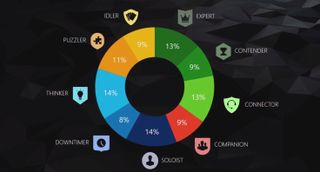Internal Microsoft research provides insight on Xbox One owners (exclusive)
At a recent developer conference, Microsoft shared some interesting statistics about Xbox One ownership in the U.S.


The company shared internal documents with its Xbox partners privately to help developers get an understanding of the types of customers that are active on Xbox Live today. And we got our hands on those documents!
Here are some interesting stats on Xbox One owner behavior.
Xbox users in the U.S.
The information in these documents is based on responses from around 2,000 Xbox One owners surveyed across the U.S. Here are some quick highlights from the documents:
- The split in Xbox One ownership between genders is 42 percent female and 58 percent male.
- Most Xbox One gamers reside in the 25- to 34-year-old bracket, followed closely by the 35- to 44-year-old bracket.
- 56 percent of Xbox One owners live with a married spouse or partner, 10 percent live alone, and 23 percent live with their parents.
- Many Xbox One owners have an annual income of around $75,000.

Microsoft says there's little correlation between age or gender when it comes to determining player engagement, and it says autonomy is a better measure. Young adults and teens have the most autonomy, naturally, and families comprised of young children have the least gaming autonomy, according to Microsoft.
When it comes to Xbox player behavior, Microsoft identified a range of categories for the way Xbox Live users engage with the platform. Fifty-three percent of all Xbox users fit into the "socializing" category, which sees around 17 hours of time spent in multiplayer games per week on average. This is likely what led Microsoft to build features like LFG and Clubs.
Microsoft also noted that almost half of Xbox owners are "explorers," who are heavily invested in the Xbox ecosystem and tend to purchase all sorts of titles. Subscription-based features such as Game Pass and EA Access are designed to serve this type of user.

What motivates Xbox gamers?
Microsoft also touched on focus groups and other surveys it had experience with, discussing the types of motivations for why people game. The data for the following sections comes from a user base of almost 8000, across four markets. Microsoft identified "12 core fundamental" aspects of motivation for gaming and discovered nine separate types of players who weight groups of motivational aspects more similarly on average.
Get the Windows Central Newsletter
All the latest news, reviews, and guides for Windows and Xbox diehards.
On the radial graph below, I most closely identify with Segment 9 (dark green), as the type of gamer who values exploration, problem-solving, customization, immersion, and emotional simulation above all else (essentially RPGs).


Microsoft Research named the nine segments based on each user group's primary motivations and preferences for gaming. Segment 9 "Experts," spend the most money and time on Xbox and PC, preferring explorative RPGs with sci-fi/fantasy themes. "Contenders," in lighter green, are competitive players who enjoy customization and achievement. Companion gamers play to bond with family and friends, such as parents and children, or their partners. Soloists prefer immersive single-player experiences and have longer play sessions than some of the other segments.
Microsoft wanted to stress that gamers are a diverse bunch, and the company backed it up with hard data. People play for all sorts of reasons, from all sorts of backgrounds. While there is a huge amount of diversity, there are clusters of correlations that can help developers understand what types of features to build into their games, as well as help Microsoft understand what features to build into Xbox Live.
What type of gamer are you? Let us know in the comments.

Jez Corden is a Managing Editor at Windows Central, focusing primarily on all things Xbox and gaming. Jez is known for breaking exclusive news and analysis as relates to the Microsoft ecosystem while being powered by tea. Follow on Twitter @JezCorden and listen to his XB2 Podcast, all about, you guessed it, Xbox!